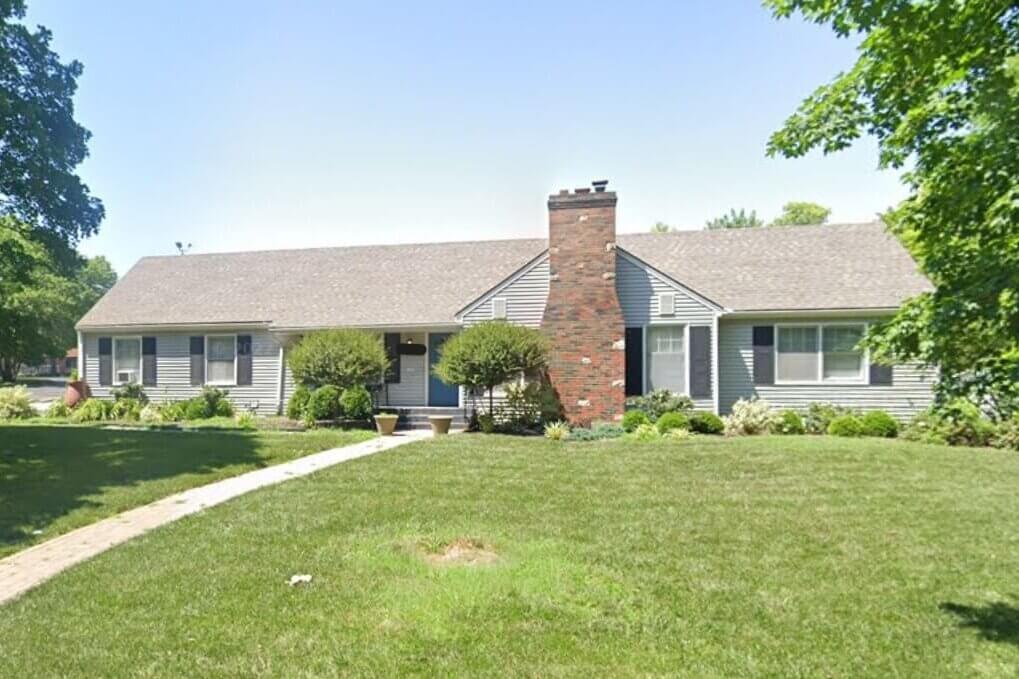In the journey towards recovery from addiction, one of the most crucial aspects is finding a supportive and structured environment to transition back into everyday life. This is where sober living homes come into play.
Sober living homes (different from halfway houses) provide individuals in recovery with a safe and supportive space to continue their sobriety journey after completing a residential treatment program.
In this post, we will explore the concept of sober living, its benefits, the role it plays in long-term recovery, and the steps involved in choosing the right sober living home for your needs.
Recovering from addiction is a challenging and transformative process.
It requires commitment, dedication, and a supportive environment.
While residential treatment programs provide an excellent foundation for recovery, the transition back into everyday life can be overwhelming for many people.
Right back into daily stressors, triggers, and overwhelm.
This is where sober living homes come in as an invaluable resource.
These homes offer a unique and structured environment that promotes sobriety and personal growth.
They serve as a stepping stone between the controlled environment of a treatment center and the real world.
By providing a substance-free environment, accountability, and a supportive
community, this tool can significantly enhance the chances of long-term recovery.

Understanding Sober Living Homes
Our homes are residential homes specifically designed to support individuals in recovery from addiction.
These homes create a safe and substance-free living environment where members can practice the skills and coping mechanisms they learned in treatment.
Unlike treatment centers, members in sober homes have more independence and flexibility as they gradually reintegrate into their regular life activities.
The structure and rules of each home may vary, but they typically include guidelines such as mandatory drug testing, regular house meetings, curfews, and participation in 12-step meetings or other recovery support groups.
The main goal is to provide a structured and accountable environment that fosters healthy habits and positive peer support.
Benefits of Sober Living
Most homes offer an array of benefits that contribute to lasting recovery. Here are some of the key advantages:
–> A Supportive Community
One of the essential aspects of a sober living home is the supportive community they provide.
Members have the opportunity to connect with others who are also committed to sobriety and understand the challenges and triumphs of the recovery process.
Watching television, movies, and sports, having meals together, going to meetings together all foster a sense of community and fellowship that strengthens sobriety on a daily basis.
This sense of community can be immensely comforting and help individuals stay motivated and accountable.
–> Accountability and Structure
They offer a structured environment with clearly defined rules and expectations.
This structure helps our members establish and maintain healthy routines, develop responsibility, and practice self-discipline.
The accountability provided by the house rules and regular check-ins helps members stay on track with their recovery goals.
–> Relapse Prevention
Living in a substance-free environment significantly reduces the risk of relapse.
Sober living homes enforce a strict policy against drug and alcohol use, minimizing the triggers and temptations that often lead to relapse.
The supportive community and accountability measures further reinforce relapse prevention by providing a network of peers who can offer guidance and support during challenging times.
–> Life Skills Development
Most programs focus not only on sobriety but also on overall personal growth.
Members have the opportunity to develop essential life skills, such as living with others, maintaining household chores, and healthy communication with other members, that are crucial for successful recovery.
The structured environment provides a supportive platform for learning and practicing these skills.
–> The Role of Sober Living in Long-Term Recovery
Sober living homes play a vital role in the long-term recovery process.
They act as a transitional phase between the highly structured environment of a treatment center and independent living.
This transitional period allows more time to solidify their commitment to sobriety while gradually getting back into society and their regular routines.
By providing a supportive and substance-free environment, sober living homes offer a buffer zone for individuals in early recovery.
The stress and challenges of daily life can be overwhelming, and transitioning directly from a treatment center to independent living may increase the risk of relapse.
Sober living homes bridge this gap, offering a supportive community and the tools necessary to navigate the early stages of sobriety.
And, sober living homes allow individuals to practice the skills and coping mechanisms they learned in treatment within a supportive and structured environment.
This practice is essential for building resilience and confidence in your ability to maintain sobriety outside of a controlled treatment setting.
The gradual reintegration into life also allows individuals to address any underlying issues or triggers that may arise during this transition.
The accountability measures and support available in sober living homes greatly contribute to sustained recovery.
Residents are surrounded by peers who understand the challenges of addiction and can provide guidance and support when needed.
Regular house meetings, mandatory drug testing, and participation in recovery support groups ensure they stay on track and actively engage in their recovery journey.
–> Choosing the Right Sober Living Home
When it comes to choosing a place, several factors should be considered to ensure the best fit.

Here are some steps to guide the selection process:
Step 1: Research and Gather Information
Begin by researching different sober living homes in your location.
Look at websites, photographs, and activities to make sure the house is the right fit for your lifestyle.
Reading online reviews and testimonials can provide insights into the experiences of past residents, but don’t use this as your only guide.
Step 2: Assess the Environment and Amenities
Pay attention to cleanliness, safety, and the overall atmosphere of the home.
Consider factors such as the number of residents, shared living spaces, and the availability of recreational activities or support services.
See pictures of our homes here.
Step 3: Evaluate the Program Structure
Inquire about the specific program structure of each home. Different programs offer different levels of support and programming.
Understand the rules, expectations, and guidelines in place to ensure a supportive and recovery-oriented environment.
Ask about the frequency of drug testing, house meetings, and the availability of recovery support resources.
Step 4: Consider the Location
Consider the location of the sober living home in relation to support networks, employment opportunities, and outpatient treatment options.
A convenient location can facilitate access to necessary resources and enhance the overall recovery experience.
Step 5: Financial Considerations
Understand the financial aspects including the cost, payment options, and potential insurance coverage.
Facilities attached to treatment centers, as well as non-profit organizations may offer scholarships or sliding scale fees based on income.
It is important to find a home that aligns with your budget and financial capabilities.
Step 6: Seek Recommendations and Professional Guidance
Seek recommendations from trusted professionals in the addiction recovery field, such as therapists, counselors, or support group leaders.
They may have valuable insights and recommendations based on their experience and knowledge of the local sober living options.
Step 7: Trust Your Instincts
Ultimately, trust your instincts and intuition when making a decision.
Consider how comfortable and aligned you feel with the sober living home’s values, members, and overall atmosphere.
Choose a home that resonates with you and provides the necessary support for your recovery journey.
Learn more about Kansas City Recovery owner, Angela Pugh, here.
Frequently Asked Questions (FAQ)
Q1: What is the average length of stay in a sober living home?
A1: The length of stay in can vary depending on individual needs and goals. Some individuals may stay for a few months, while others may choose to stay for a year or longer. The primary focus is on ensuring a solid foundation in recovery before transitioning to independent living.
Q2: Are there age restrictions for sober living homes?
A2: Some sober living homes may have age restrictions, while others may cater to specific age groups. It is essential to inquire about any age requirements when researching and selecting a home. Kansas City Recovery men’s sober living serves men 18 and over.
Q3: Can I continue working or going to school while living in sober living?
A3: Yes, Kansas City Recovery wants members to work or pursue education while living in our homes. We want our members to stay busy and productive.
Q4: Are visitors allowed in sober living houses?
A4: Sober living homes have visitor policies in place to maintain the integrity of the supportive environment. Visitors may be allowed during designated hours, and certain guidelines may need to be followed to ensure the safety and comfort of all members.
Q5: What happens if I relapse while in a sober living home?
A5: Relapse is always a possibility in recovery. Sober living homes are designed to provide support and guidance in case of a relapse. There are protocols in place to address relapse, with safety being the primary concern.
Conclusion
Sober living homes offer a valuable pathway to lasting recovery, providing people in early recovery with a supportive and structured environment.
The benefits of sober living, including a supportive community, accountability, relapse prevention, life skills development, and continued support, greatly contribute to sustained recovery.
By following the steps outlined here, individuals can choose the right sober living home that aligns with their needs and sets them on the path to a successful and rewarding recovery journey.
Remember, recovery is possible, and sober living can be a crucial stepping stone towards a healthier sober life.
